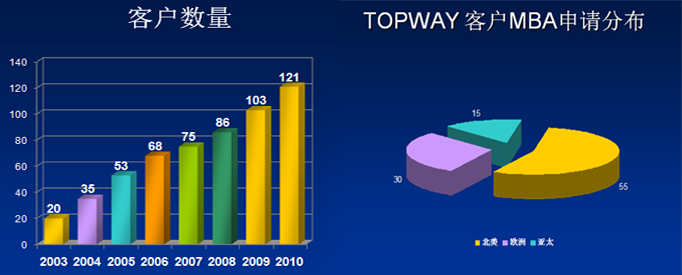|
 
- 精华
- 0
- 积分
- 361
- 经验
- 361 点
- 威望
- 13 点
- 金钱
- 427 ¥
- 魅力
- 143
|
(二)新托福听力题型
主旨题:
IBT听力主旨题考查把握谈话或演讲的主要内容的能力。对于任何一个长段子,首先务必要把握的是文章的主旨和结构,只有主旨确定了,才有可能进一步去理解细节,做推断。
主旨题特点:
u 通常是对一个谈话或演讲的主要内容的综合概括。
u 在一段长演讲中,通常会有两个或以上的主要表述内容,但这些内容往往是相互关联的,它们互相补充构成一个完整的主题。
典型提问形式:
新托福听力主旨题的问题常常以特殊疑问词开头, 例如:
What is the subject of the conversation?
Why did the man go to see the professor?
What are the man and the woman discussing?
What is the woman’s problem?
What is the lecture mainly about?
What is the professor mainly discussing?
What aspect of …… does the instructor mainly discuss?
细节题:
新托福听力中的细节是指具体的信息,例如说话人提及的事实、描述、定义和例子等。
细节题特点:
u 细节题要求考生重现对话或讲座中的具体信息,不需要做过多的推测
u 基于ETS考察内容是和主旨有关的重要细节。我们在听的过程中需要把握的往往是和考点相联系的重要信号词,比如说表示因果的so, thus等词对应于细节题中常考察的因果关系
典型提问模式:
What does the woman suggest the man do?
What help did the young man receive? Click on two answers.
Select the diagram that represents ………?
According to the instructor, what characteristic should ….... have?
How did the professor introduce …….. ?
According to the speaker, what does ……… mean?
According to the prof essor, why is A superior to B?
部分目的题:
朗阁海外考试研究中心分析发现,目的题有两种:一种是与主旨相关的,例如what is the purpose of the talk?这种形式已经在主旨题中有所列举;另外,有些目的题只与部分对话或讲座的内容相关此,类题目主要考察考生对语言交流的实际掌握能力,听出讲话者所呈现的目的。
部分目的题特点:
u 这类目的题的问题通常问的是某个短语或句子的作用
u 有些题目需要考生再听一次部分对话或讲座的内容
u 说话人通常不会直接说出自己的目的,而是用间接的表达
典型提问模式:
Why does the student say this?
Why does the student say ……?
Why does the student mention ……?
Why does the professor talk about ……?
Why does the instructor ask the class about ……?
态度题:
考生需要判断出说话人对讨论过的人或事的看法或感觉,主要考察考生对语言交流的实际掌握能力,听出讲话者所呈现的态度。
态度题特点:
u 有些题目需要考生再听一次部分对话或讲座的内容
u 正确答案往往不是文中的直接表述
u 说话人的态度通常是影响深刻、高兴、感兴趣、惊讶、焦虑等 |
|



